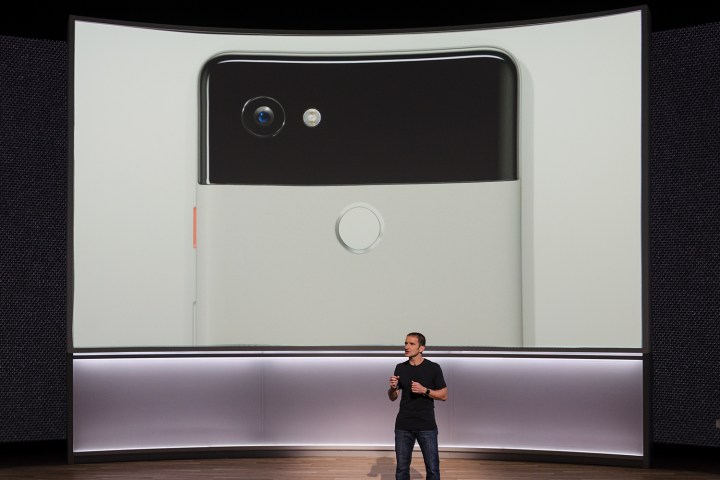
One of the highlights is AR Stickers, a Google-designed app launching in preview alongside the Pixel 2 and Pixel 2 XL. Using ARCore’s environment-scanning algorithms, the app overlays digital decorations on surfaces like floors, tables, walls, and chairs. Google demoed a few inspired by the hit Netflix series Stranger Things at the event in San Francisco, and said it’s teaming up with brands like Disney, the NBA, NBC, Netflix, and others for the first few sticker packs.

The other new ARCore apps are less exclusive — Google says they’ll work on “most” Android devices running 7.0 Nougat or newer. A new League of Legends app lets spectators watch matches unfold in their living rooms. An updated Lego app puts hundreds of digital kits and pieces at your fingertips. (Google showed a Lego astronaut zooming around in a spaceship.) And a shopping app from Houzz lets you pick, personalize, customize, and “place” furniture before you order it.
The Pixel 2 and Pixel 2 XL are uniquely optimized for ARCore, Clay Bavor, Google’s vice president of AR and VR, said. Thanks to high-fidelity gyroscopes and accelerometers, top-end cameras, and powerful image processors, they’re able to run most ARCore apps at a consistent 60 frames per second — a smoother image than you’re likely to get on less powerful devices.

Google said that ARCore focuses on three critical elements — motion tracking, environmental understanding, and lighting. It determines a device’s position and orientation in space by anchoring onto specific “landmarks” — furniture, for example — in a room, and adjusts for factors like ambient lighting. It’s not unlike Project Tango, the Google-designed depth-sensing platform built into LG’s Phab 2 Pro and Asus’s ZenFone AR. But Google sees the two technologies as complementary.
“We think of Tango more and more as an enabling technology — it’s akin to GPS, where you don’t see devices or apps branded as having this technical capability,” Google told us. “[The public] may not see consumer-branded Tango devices moving forward .”
The new ARCore-enabled apps will be available from Google’s AR Experiments showcase and the Google Play Store when they launch later this year.